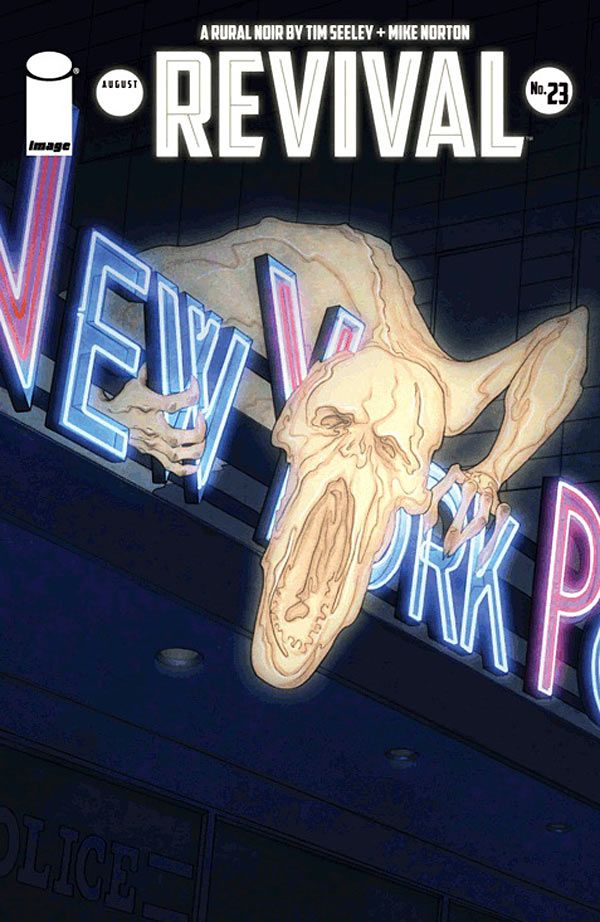Events come to a head -- and an arm, and a leg, and an eyeball -- in "Revival" #23. Tim Seeley and Mike Norton's rural noire has picked up speed and storylines since coming to the big city, and all the diverse plot points accelerate in this well-paced, quick moving installment. Though I had my doubts when Dana first came to New York, if issue #23 is any indicator, "Revival" will be more thrilling at the three-year mark than many series are at one.
At this point in the run, Seeley is juggling an impressive number of characters and plotlines. He jumps rapidly between them, sometimes only spending a third of a page in one story before moving on. Indeed, the longest he stays with a single storyline is only four pages. It means there's very little recap or grounding, so you might want to brush up on issue #22 before opening this one.
Still, Seeley and Norton handle the frequent transitions judiciously. Each section ends on a cliffhanger or important reveal, so that they feel like mini issues rather than disjointed vignettes. At first, Norton is also careful to vary his layouts from sequence to sequence, so that they feel more separate and less frenzied. One story will be horizontal strips; another will use almost entirely vertical panels. However, as the issue progresses, the separate stories look more and more alike, until they're all featured together in one of the near-final pages. It's a skillful use of aesthetics to set the pace and quicken the issue.
Though there are many stories, Seeley devotes the most time to the return of Anders Hine and the Checks brothers' secret. This storyline involves a great deal of speechifying and explaining from Anders, which Norton does his best to diversify with the use of perspective, but it's unavoidably text-heavy. It's clearly Anders' equivalent of the supervillain monologue. I still enjoyed it, though, thanks to the bitter cunning in Anders' dialogue and the self-righteous smugness that Norton draws in his face.
Throughout the issue, Seeley handles trickier, often-cliched elements well. Eight-year-old Cooper has his cutesy moments, but he's not cloyingly precociousness. In addition, the wealthy Manhattanites in this issue were ripe for being overdone, but their entitlement and classism are realistically handled. Seeley accomplishes this by layering their responses over one another. Some are unsure; some are confident; others worry about life insurance or the supply chain of their food. They're still loathsome, but humanly so.
I'm as guilty as any reviewer of paying too little attention to cover art, so let me say that Jenny Frison's covers for "Revival" just don't quit. This month's furious drawing of a Glowing Man, shrieking possessively over a "New York" sign, is so lively and scary. With lighter line work and cloudier colors than Mark Englert's, Frison gives the covers mood and menace.
Though I've been dying to know more about the Glowing Man/ghosts/demons, it feels like "Revival" is getting closer to that mystery at the right time. "Revival #23 is another excellent issue in a wonderful series.

